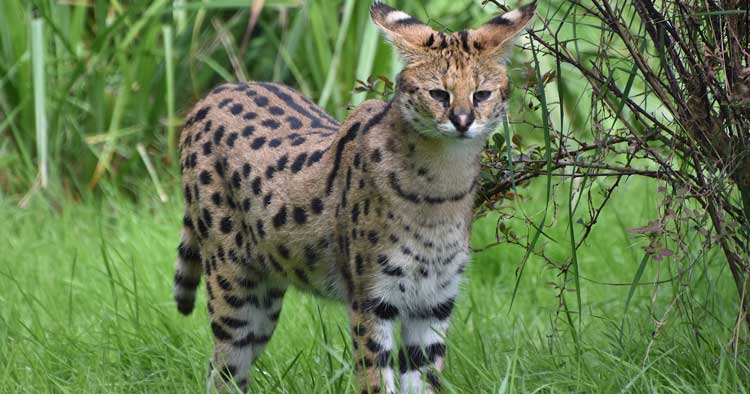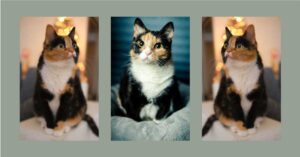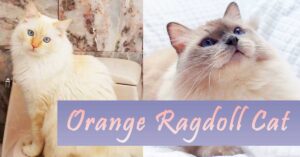Serval Cat (Leptailurus serval):
- Height: Around 20-24 inches at the shoulder.
- Weight: Males weigh between 20-40 pounds, while females weigh around 15-25 pounds.
- Life Span: Typically lives for about 10-15 years in the wild, but can reach up to 20 years in captivity.
The serval cat occupies a unique position in Africa’s complex environment thanks to its remarkable looks and unusual activities. The serval cat is fascinating to both scientists and pet lovers because of its classification, geographic range, morphological characteristics, and aptitude for hunting. In this post, we’ll set out on a quest to discover the serval cat’s mysteries, examining its distinctive traits and illuminating its crucial function on the African savanna.
Table of Contents
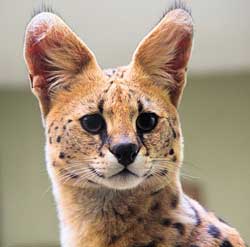
Taxonomy and Distribution
The serval cat (Leptailurus serval) belongs to the Felidae family, and its scientific name reflects its long-legged form and graceful presence. Native to Africa, servals are primarily found in regions such as the sub-Saharan grasslands, wetlands, and marshes. These elusive creatures have adapted to a variety of habitats, including savannas, forests, and even mountainous regions.
Physical Features
The serval cat boasts distinct physical attributes that make it instantly recognizable. It possesses a slender body, with males typically weighing between 20-40 pounds and females ranging from 15-25 pounds. However, their most striking features are their elongated legs, which give them a tall and agile stature. Complementing their slender form are their large ears, which enable exceptional hearing capabilities.
Hunting and Feeding Behavior
Serval cats are skilled hunters like other wild cats, employing specialized techniques to capture their prey. With their long legs and keen sense of hearing, they are capable of leaping high into the air, pouncing on unsuspecting birds or rodents. Small mammals like rodents, birds, frogs, and even insects make up a large portion of their food. The serval thrives in grassy areas where it contributes significantly to the preservation of a healthy ecology because of its special hunting skills.
Social Behavior and Communication
While servals are predominantly solitary creatures, they may have overlapping home ranges. They mark their territories through scent marking and vocalizations. Servals communicate through a range of sounds, including hisses, purrs, and chirps, which are vital for establishing territory boundaries and attracting potential mates.
Reproduction and Parental Care
During mating season, servals engage in courtship rituals, which include various displays and vocalizations. The gestation period lasts approximately two to three months, after which the female gives birth to a litter of usually two to three kittens. The mother provides extensive maternal care, nurturing and protecting her offspring until they are ready to venture out on their own.
Threats and Conservation Status
Serval cats are in great danger in the wild from a variety of factors, such as habitat degradation, hunting, and conflicts with people. The International Union for Conservation of Nature (IUCN) presently rates their conservation status as “Least Concern”. To safeguard their survival in the face of mounting challenges and conserve their ecosystems, however, ongoing efforts are required.
Interactions with Humans
Serval cats have cultural significance in various African traditions and folklore, symbolizing qualities such as agility and wisdom. Unfortunately, human activities sometimes result in conflicts with servals, particularly when they come into contact with farmlands or settlements. Nevertheless, servals also present opportunities for responsible ecotourism, contributing to local economies and fostering appreciation for these magnificent felines.
Captive Care and Domestication
Due to their unique appearance, some individuals may be tempted to keep servals as exotic pets. However, it’s important to understand that servals have specific needs and complex care requirements. Responsible ownership and adherence to legal regulations are essential to ensure the welfare of both servals and their human caretakers.
Crossbreeding from Serval
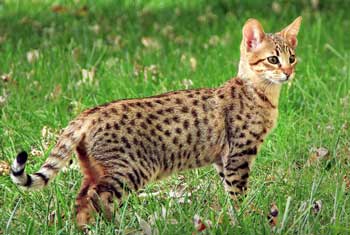
The serval (Leptailurus serval) is a wild cat species that has been involved in crossbreeding with other felid species in captivity. Here are a few examples of hybrid species derived from crossbreeding with servals:
- Savannah Cat (Serval x Domestic Cat): The Savannah cat is a hybrid resulting from the crossbreeding of a serval with a domestic cat (Felis catus). It combines the exotic appearance of the serval with the domestic cat’s more manageable size and temperament.
- Servaline (Serval x Margay): The servaline is a hybrid resulting from the crossbreeding of a serval with a margay (Leopardus wiedii). This hybrid is relatively rare and is the product of controlled breeding efforts.
- Caraval (Caracal x Serval): The caraval is a hybrid resulting from the crossbreeding of a caracal with a serval (Leptailurus serval). It inherits traits from both parent species, such as the caracal’s tufted ears and the serval’s distinctive coat patterns.
It’s important to note that crossbreeding between servals and other species is typically limited to controlled breeding programs in captivity. These hybridizations should be approached with caution and responsibility, taking into consideration the welfare and conservation implications of such crosses. Preserving the genetic integrity of wild populations and ensuring the well-being of the animals involved should always be prioritized.
Conclusion
The serval cat, with its elegant form and remarkable hunting abilities, embodies the spirit of Africa’s savannas. Its role as a skilled predator and its unique adaptations make it an integral part of the delicate ecosystem. By understanding and appreciating the serval cat, we can foster a sense of responsibility towards its conservation, ensuring that this captivating species continues to roam the African landscape for generations to come.
Regulations and Legal Obstacles in Serval Cat Adoption
Adopting a serval cat as a pet can present several legal difficulties depending on the jurisdiction. It’s important to note that laws and regulations regarding ownership and possession of exotic animals, including servals, vary widely between countries, states, and even local municipalities. Here are some common legal challenges and considerations associated with adopting a serval cat:
- Wildlife Regulations: Many countries and regions have strict regulations on owning and keeping wild animals. Servals may be classified as wildlife or exotic species, requiring special permits or licenses for ownership. It is crucial to research and comply with local wildlife regulations to avoid legal issues.
- CITES Regulations: Servals are listed under Appendix II of the Convention on International Trade in Endangered Species of Wild Fauna and Flora (CITES). This means that their trade and movement across international borders are regulated, requiring appropriate permits and documentation.
- Permits and Licenses: In jurisdictions where serval ownership is legal, obtaining permits or licenses may be necessary. These permits often involve stringent requirements such as providing proof of adequate housing, veterinary care, and experience in handling exotic animals.
- Zoning and Local Ordinances: Local zoning laws and ordinances may restrict or prohibit the ownership of certain exotic animals, including servals. It is essential to check with local authorities and understand the specific regulations in your area.
- Liability and Insurance: Owning a serval cat comes with potential risks and liabilities. Some jurisdictions may require exotic pet owners to carry liability insurance to cover potential damages or injuries caused by the animal.
- Ethical Considerations: Beyond legal hurdles, it is crucial to consider the ethical aspects of owning a serval cat. These animals have specialized needs and require appropriate care, diet, and living conditions. Ensuring their well-being and meeting their unique requirements can be challenging for inexperienced owners.
It is strongly advised to consult with local wildlife authorities, exotic animal experts, or legal professionals to understand the specific legalities and challenges associated with owning a serval cat in your area. Responsible ownership of exotic animals should prioritize the welfare and conservation of the species and comply with all relevant laws and regulations.

